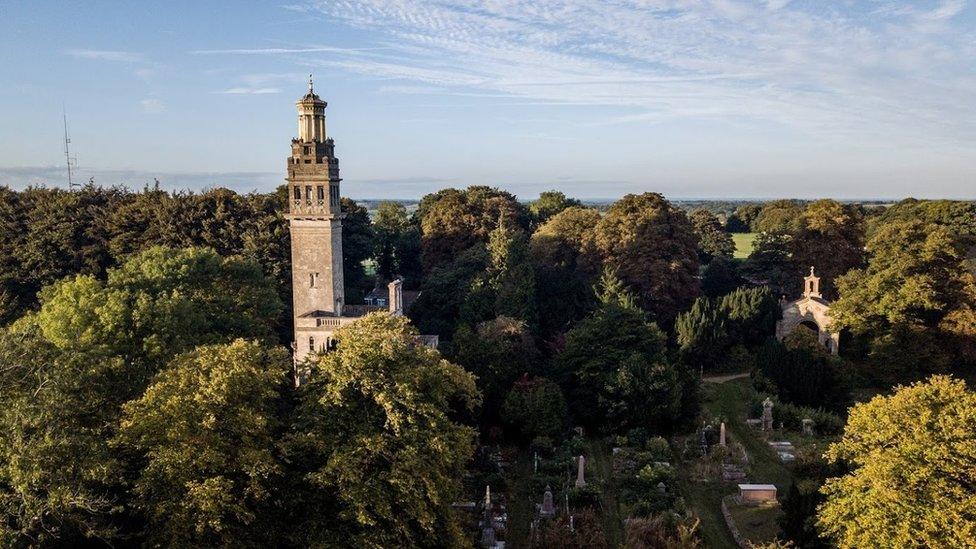Bath excavations show Beckford’s hidden grotto is double the expected size
- Published
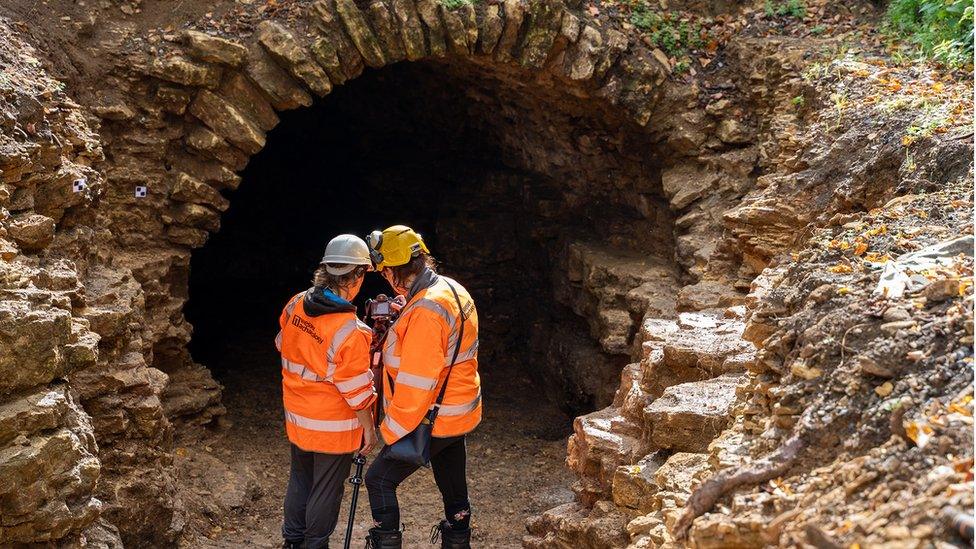
It is believed that following William Beckford’s death, the Tower-end of the grotto was filled in and the tunnel became obscured
Excavations have revealed that a hidden grotto at Beckford's Tower is double the expected size.
A team of archaeologists have uncovered the original steps and retaining walls of William Beckford's hidden grotto tunnel, with the extent of the interior previously a mystery.
Several historic artefacts believed to be from the 1820s have also been recovered in the process.
The grotto will be open to the public from March 2024.
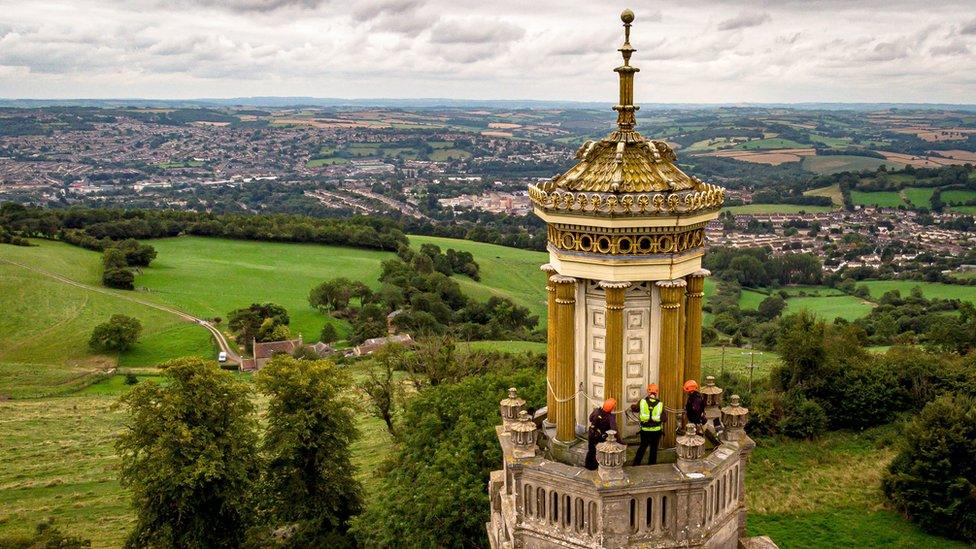
Bath Preservation Trust acquired the tower in 1993 and carried out extensive repairs
Built between 1826 and 1827, Beckford's Tower is a Grade I listed building and is currently on the Heritage at Risk register.
It became a retreat for the "colourful and controversial" writer William Beckford, who inherited his father's fortune aged 10 years old, to house his collection of art, books and furniture.
Emery Brothers Ltd and Wessex Archaeology began the full excavation in September 2023, and uncovered an underground cavity seven meters long.
"At first glance the grotto looks hacked out of bedrock, but upon closer inspection it has been very cleverly cut and shaped," said Dr Amy Frost, senior curator at Bath Preservation Trust.
"Having only ever seen one partial historic drawing of the grotto steps prior to the excavation, uncovering the extent of them has been a wonderful surprise for us all."
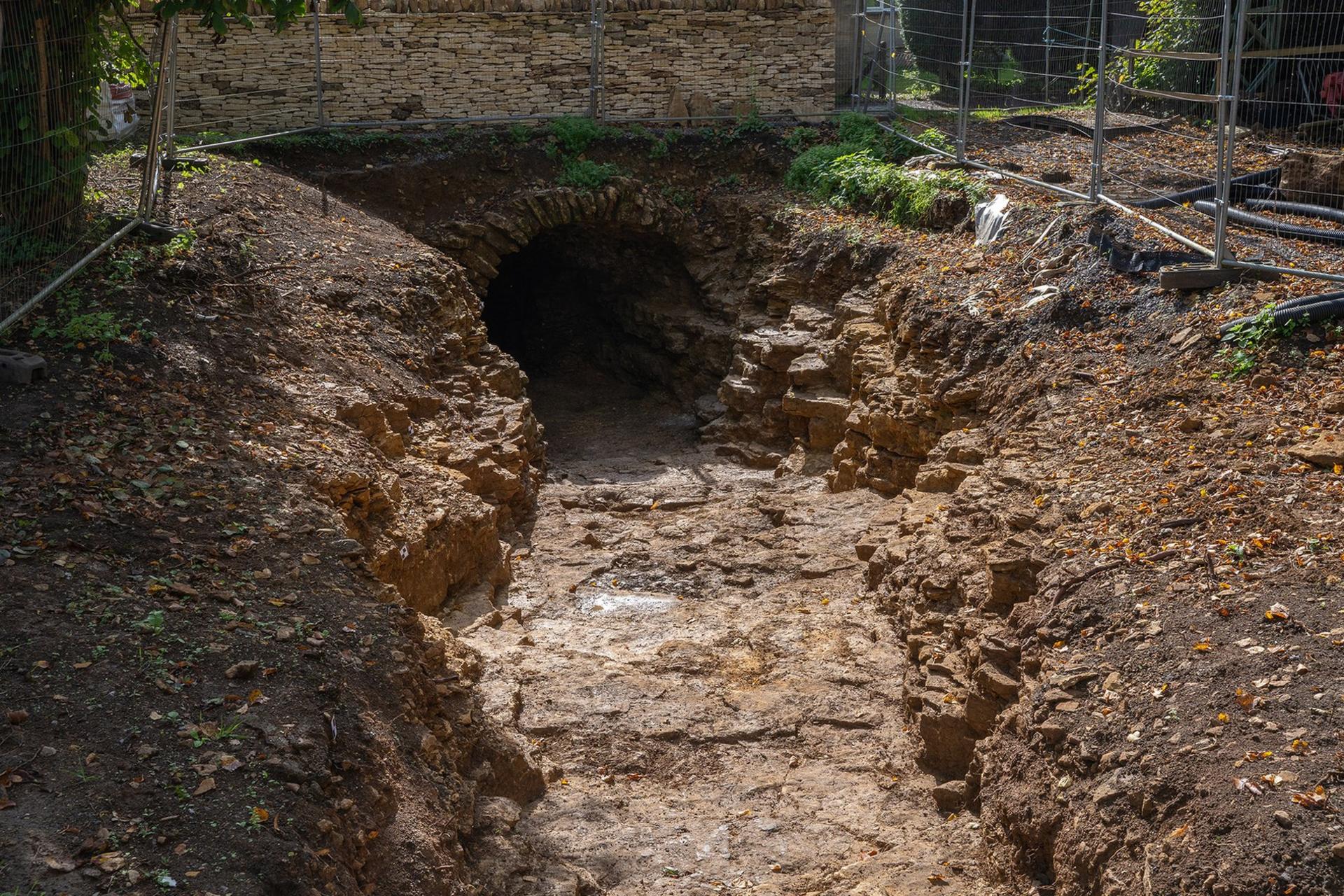
Various medicine and beer bottles were among the historic objects uncovered during the dig
Patrizia Ribul, head of the Beckford Tower project, said the new findings have reconfirmed many of the things they already knew about Beckford, such as "his attention to detail in design and his enthusiasm for nature".
"The grotto also serves as a reminder of Beckford's enormous wealth, gained through his involvement with the transatlantic slave trade, which enabled him to devote so much of his time to designing and curating his Tower and pleasure gardens, including the colonial acquisition of exotic specimen trees and shrubs," she added.
Experts from Wessex Archaeology have created a 3D model of the tunnel, external by overlapping hundreds of surveyed images.
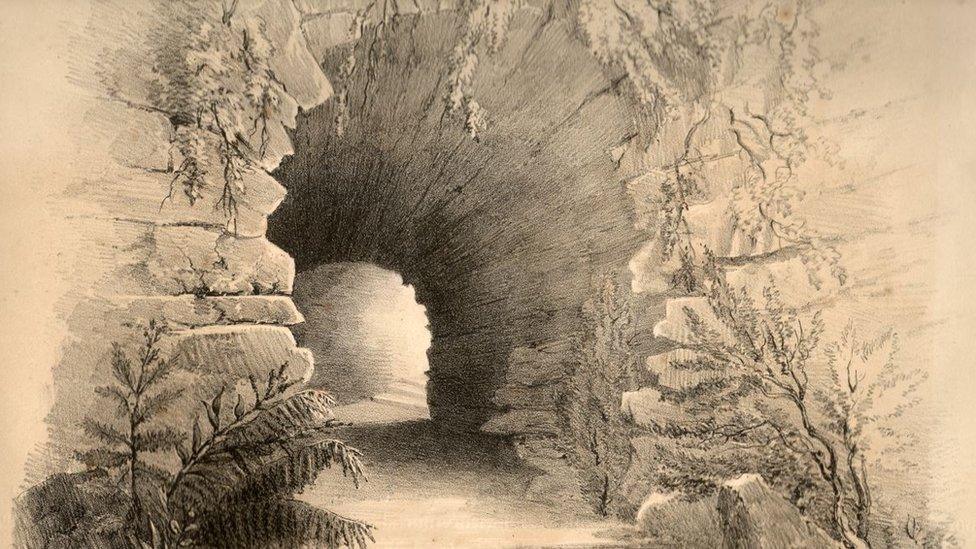
A sketch by Willes Maddox from 1844 of the subterranean grotto at Beckford Tower
"The rock-cut steps that descend into the grotto wind steadily downwards, with the curving rock face hiding the entrance to the tunnel, heightening the sense of mystery for anyone visiting," said Marek Lewcun, archaeologist at Wessex Archaeology.
Several historical objects were uncovered during the excavation, including clay tobacco pipes dating back to the 19th century, perhaps smoked by the stonemasons who first built the grotto in the 1820s.
"It has been a privilege to be a part of the project to excavate and restore the grotto tunnel, which will allow the museum's visitors to see it once again after 100 years of obscurity," Mr Lewcun added.
Once Beckford's Tower reopens in March 2024, the underground grotto will be accessible to visitors as part of their museum experience.

Follow BBC West on Facebook, external, X, external and Instagram, external. Send your story ideas to: bristol@bbc.co.uk, external
Related topics
- Published2 September 2021
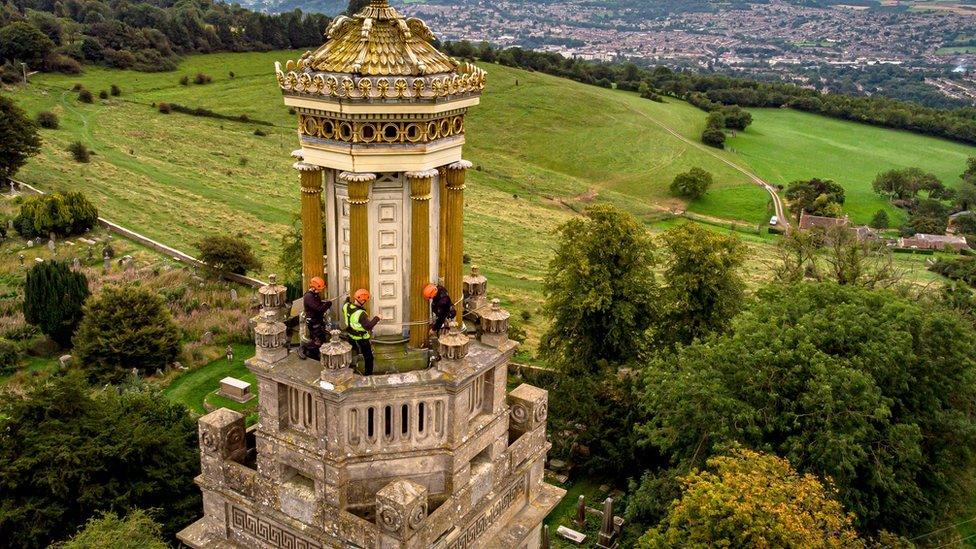
- Published30 December 2019
